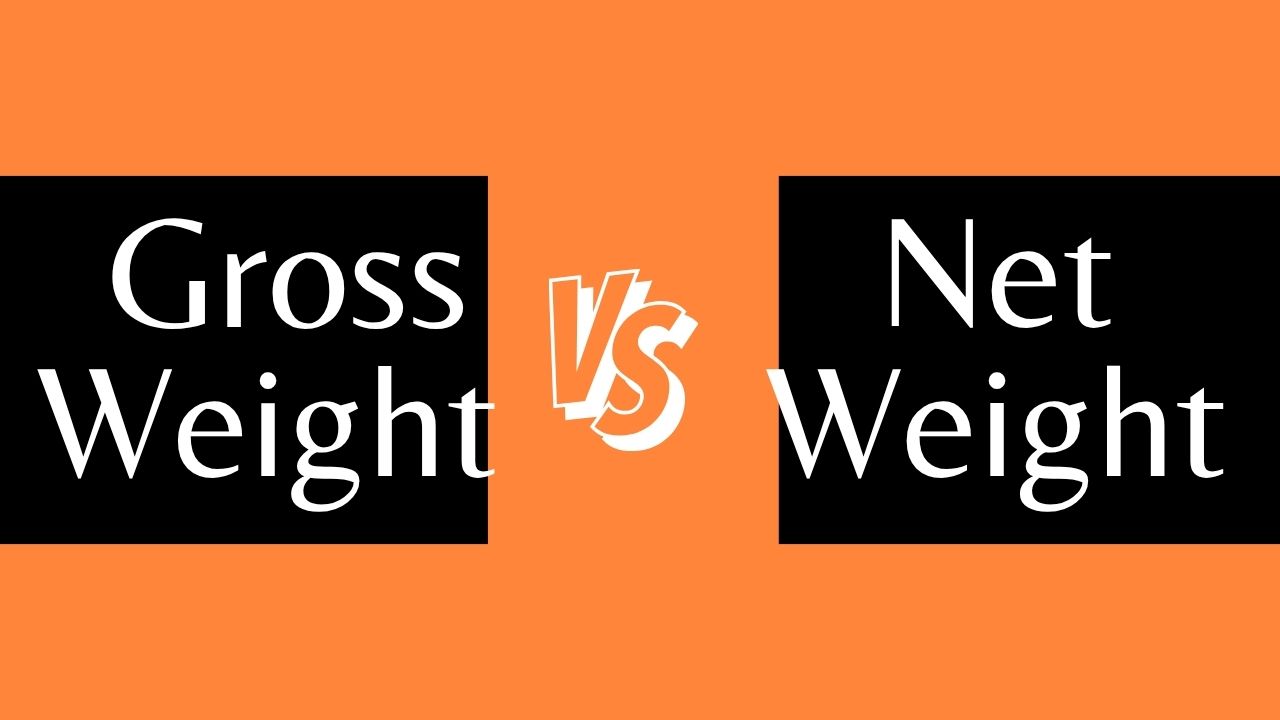As a new business owner considering shipping, there are two terms you will hear most often – Gross Weight vs Net Weight. While both are terminologies that reflect weight, understanding the difference between the two concepts is essential because of the crucial differences they can make for any business or consumer in terms of pricing, product, or transportation costs.
If you’re interested in learning more about gross weight versus net weight, you’ve landed on the right page. Hop on below to read a detailed guide on both gross and net weight and learn what the key differences between them are.

What Is Gross Weight?
The Gross Weight refers to the total overall weight of the product, including all components, such as the product itself, packaging materials, protective fillers, shipping boxes, and other contents. This particular weight scale is a critical metric in the shipping process, as it directly impacts several key aspects of operations and is used by companies to determine their shipping fees.
To help you better understand gross weight, let’s provide an example. For example, you are a business owner shipping a smartphone to a customer. Consider the net weight of the phone itself to be 0.4 lbs. Additionally, the weight of the retail box, charger, and user manual inside adds up to around 1 lb. Now, consider the weight of the shipping box in which you will keep the phone, as well as the protective bubble wrap you will use to cover it, to be around 0.6 lbs.
So, while the smartphone itself weighs 0.4 lbs, with all the packaging and other amenities, the total weight or gross weight of your package is 2 lbs.
What Is Net Weight?
Unlike gross weight, net weight refers to the weight of the product itself, excluding any additional weight due to packaging or materials. This form of weight is essential to maintain transparency, especially within the food and cosmetic industries, where providing customers and regulators with accurate weight information may be required by law.
To better understand net weight calculations, let’s provide an example. Consider that you are a company that sells peanut butter. If the total weight of the jar and the peanut butter that you have filled in adds up to 2.87 lbs, then what will be the weight of the peanut butter itself?
To calculate this, subtract the weight of the empty jar from the above figure. So, if your jar weighs around 2 lbs, then the content inside (peanut butter) will have a net weight of 0.87 lbs.
Gross Weight vs Net Weight: Key Differences

Now that you understand the basic difference between gross weight and net weight, along with the weight breakdown for each component, it is time to dive a little deeper into the key differences. Here are some additional key differences that you should know about gross weight vs net weight.
Usage in Shipping and Retail
Gross Weight is used in shipping, freight cost calculations, and logistics, usually because most carriers charge businesses based on the total weight (gross weight) of the product.
Net weight, on the other hand, is commonly used in pricing, nutritional labeling, and consumer information to indicate the amount of product inside the packaging or container.
Importance in Trade
Gross weight is a crucial aspect of transportation regulation, particularly when it comes to bulk shipping or air freight.
The net weight, on the other hand, is important for customs declarations, assessments, product quality, and cost-per-unit evaluations.
Labeling
Gross weight is not usually a part of the description or shown on retail products as commonly.
However, net weight is shown on packaged goods with precision.
Impact on Cost
Gross weight impacts overall shipping and transportation costs and, hence, can play a significant role in the business’s total expenses.
The net weight, on the other hand, affects the product more on the price-per-unit side.
Units Used
Both gross weight vs net weight use the same units, like grams, kilogram, or pounds, but both weights use and apply these units differently.
Weight Terms to Know
While gross weight vs. net weight are two essential weight terms in the shipping and logistics industry, those are not commonly used terms. Some other important weight terms to know are:
Gross Vehicle Weight Rating (GVWR)
This term refers to the maximum overall allowable weight or the combined weight of a fully loaded vehicle, including the weight of the vehicle, accessories, passengers, fuel, and cargo weight, which a vehicle can carry before it surpasses safety standards and becomes unsafe or causes damage to the vehicle.
Tare weight
Tare weight is another crucial metric used in the shipping industry. Unlike the GVWR, which is the maximum weight of a full container, the Tare weight is the officially accepted weight of an empty container.
The weight of an empty container is essential when it comes to accurate load planning and setting a price in the trucking industry.
Total weight
Total weight is another term for gross weight, which refers to the combined weight of all items in the shipment, including goods, packaging materials, and any additional items used during transportation.
Volumetric weight
The volumetric weight is calculated based on the length, width, and height of a parcel, which is then calculated into volumetric kilograms. The formula for this weight metric varies from courier to courier and the services that are used.
Why Understanding These Terms Saves You Money
By understanding the difference between gross weight vs net weight and gaining a deeper understanding of these terms, businesses can significantly reduce shipping costs.
Shipping carriers typically charge based on the gross weight of the product. If you mistakenly base your shipping calculations on the net weight alone, not only will you underestimate your cost, but you will also face unexpected charges. Hence, it is essential to accurately calculate your gross weight to estimate the shipping fee better and choose the most cost-effective method available to you.
Moreover, once you understand what contributes to the gross weight of your shipping product, you will eventually start optimizing your packaging more effectively. This means that as a business owner, you will resort to using lighter and more efficient materials to help reduce the overall weight of the product and avoid any extra freight charges that can be cut down on. Focusing on such minute details can lead to substantial long-term savings, especially for businesses that frequently ship or ship in bulk.
FRQs
Most consumer products display the net weight on their packaging. This is especially common in the food, cosmetics, and home goods industries, given that it represents the amount of usable product.
Yes! Both weights can be the same in cases where the product is not packaged.
Gross weight is usually listed on shipping documents, invoices, or transport packaging, but it is not often labeled on the retail product.
Optimize Your Shipping Inventory with NextSmartShip
Now that you understand the difference between gross weight and net weight, as well as other related shipping weight terminologies, it is time to research a reliable shipping carrier for your business. Well, then, let us introduce you to NextSmartShip.

NextSmartShip is one of the leading shipping services currently in operation, operation, with its main headquarters in China and multiple warehouses scattered across the globe. Any business that works in conjunction with NextSmartShip can guarantee timely delivery to all its customers, as this service optimizes shipping inventory and ensures that all products remain in stock.
The service ships to over 200 countries and is one of the best decisions you can make for your business. To learn more, we highly recommend visiting the website today.
Conclusion
If you are someone who wants to learn the difference between gross weight and net weight, then we hope this article was helpful for you. While having a basic understanding of these terms is essential, having a shipping carrier on hand that helps you make the right shipping decisions is also crucial. This is why we highly recommend NextSmartShip to our customers. The service is one of the most trusted decisions that you can make and something that you will not regret for sure.

